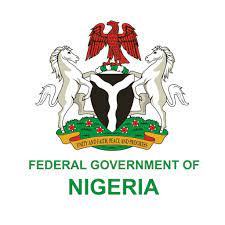The Federal Government of Nigeria has unveiled its 2025-2027 Medium-Term Expenditure Framework and Fiscal Strategy Paper, outlining a substantial shift in fiscal priorities over the next three years. Notably, the government plans to allocate a larger portion of its budget to debt servicing than to capital expenditure, signaling continued reliance on borrowing to finance its operations.
Record Borrowing to Fund Expenditure Plans
To meet its expenditure targets, the government has disclosed plans to borrow an additional N31.24 trillion over the next three years. This new borrowing will further swell Nigeria’s already high debt stock, which stood at N134.3 trillion as of June 2024. If borrowing trends continue, Nigeria’s debt could reach nearly N170 trillion by 2027.
The borrowing is expected to finance budget deficits and other critical expenditures, raising concerns about the nation’s rising debt-to-revenue ratio. Experts warn that this trajectory may push the country’s debt levels to unsustainable heights.
Breakdown of Borrowing Plan
The proposed borrowing is structured as follows:
2025: N9.22 trillion, with 80% (N7.37 trillion) to be sourced from domestic borrowing, and the remainder from foreign borrowing (N1.84 trillion).
2026: N8.78 trillion, with domestic borrowing at N8.78 trillion and foreign borrowing at N2.2 trillion.
2027: N13.24 trillion, with domestic borrowing expected to rise to N10.59 trillion and foreign borrowing to N2.65 trillion.
Of the total N31.24 trillion, N24.98 trillion will come from domestic sources, while N6.25 trillion will be raised from foreign creditors.
Concerns Over Debt Sustainability
This borrowing pattern comes amid growing concerns over Nigeria’s debt sustainability. As the government increases its debt load, the proportion of the budget allocated to servicing existing debt is expected to rise, potentially squeezing funds for development projects and essential services.
Analysts are particularly worried about the debt-to-revenue ratio, which has already been a significant issue for the country. With national revenues struggling to keep pace with debt obligations, the government faces an uphill battle in balancing the budget while ensuring long-term economic stability.
Debt Servicing to Outpace Capital Expenditure
In the new fiscal framework, debt servicing is projected to outstrip spending on capital projects. This marks a critical shift in the government’s fiscal strategy, as previous budgets emphasized infrastructure development and investment in key sectors such as health, education, and energy. However, with growing debt obligations, funds for capital expenditure may be significantly limited, affecting Nigeria’s long-term growth prospects.
The Path Ahead
With borrowing levels set to soar and a larger share of the budget dedicated to debt servicing, Nigeria’s fiscal outlook for the next three years remains uncertain. Policymakers will need to carefully navigate the balance between borrowing, revenue generation, and economic growth to avoid pushing the country into a fiscal crisis.
The 2025-2027 Medium-Term Expenditure Framework and Fiscal Strategy Paper is part of the government’s long-term approach to managing national finances. It outlines key spending priorities, including funding for infrastructure, education, healthcare, and defense, alongside strategies for increasing revenue generation and reducing dependency on foreign debt.


















